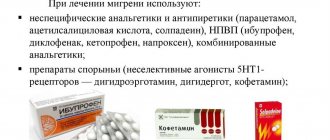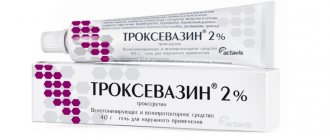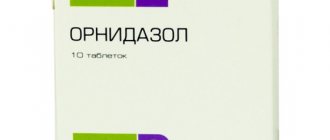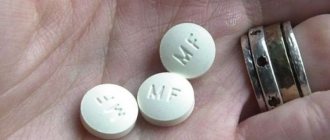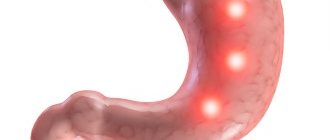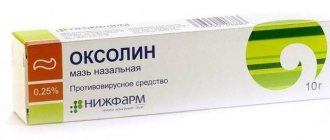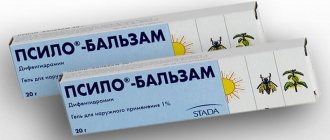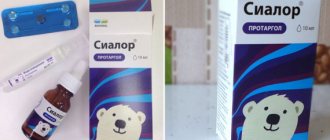pharmachologic effect
Sultamicillin is a double ester in which the ampicillin and beta-lactamase inhibitor sulbactam binds to a methylene group.
In biochemical studies with cell-free bacterial systems, sulbactam has been shown to be an irreversible inhibitor of very important beta-lactamases in penicillin-resistant organisms.
Sultamicillin is effective against a wide range of gram-positive and gram-negative bacteria.
Ampicillin is bactericidal in this combination. Ampicillin, by inhibiting the biosynthesis of cell wall mucopeptide, is effective against sensitive microorganisms found during the period of active proliferation.
Indications for use
The use of Ampisid is recommended for the treatment of bacterial infections caused by sensitive microorganisms. In particular, the drug is effective against infections:
- Respiratory organs, including lung abscess, pleural empyema, chronic bronchitis, pneumonia;
- ENT organs, including sinusitis, otitis media, tonsillitis;
- Genital organs and urinary tract, including cystitis, pyelitis, pyelonephritis, endometritis;
- Biliary tract, including cholangitis and cholecystitis;
- Soft tissues and skin, including erysipelas, secondary infected dermatitis, impetigo;
- Gastrointestinal tract, including dysentery, salmonellosis;
- Bones and joints.
In addition, taking the drug is advisable in the treatment of septic endocarditis, sepsis, meningitis, peritonitis, scarlet fever, gonococcal infection, as well as as a prevention of postoperative complications during operations on the pelvic and abdominal organs.
Adverse reactions
Duocid is usually well tolerated. Most observed side effects are mild or moderate and are usually easily tolerated during treatment.
The instructions indicate the following undesirable effects: diarrhea, nausea, vomiting, epigastric discomfort, pain and cramps in the abdomen. Enterocolitis and pseudomembranous colitis may rarely occur.
Infrequently, angioedema, dermatitis and urticaria, as well as skin rash and itching, may occur.
In case of hypersensitivity, an allergic reaction, anaphylactic shock and anaphylactoid reaction are possible.
From the central and peripheral nervous system, dizziness, headache, drowsiness, and fatigue were noted.
Drug interactions
Studying drug interactions will help to carry out competent treatment with Ampisid:
- The combination of the drug with anticoagulants can change platelet aggregation, hemocoagulation parameters, and enhance the effect.
- Antibiotic antagonists are Erythromycin, Chloramphenicol, tetracyclines, sulfonamides, synergists are cephalosporins, aminoglycosides, Vancomycin, Cycloserine, Rifampicin.
- Glucosamine, antacids, aminoglycosides, laxatives, food can reduce the absorption of the drug; ascorbic acid can increase it.
- The drug reduces the effectiveness of oral contraceptives, ethinyl estradiol, and increases the toxicity of Methotrexate.
- Diuretics, Probenecid, Allopurinol, Phenylbutazone increase the concentration of the antibiotic in the blood.
- Allopurinol in combination with Ampisid leads to the appearance of a skin rash.
Compatibility with other drugs
Concomitant use of ampicillin and allopurinol significantly increases the incidence of skin rashes in patients compared with patients receiving ampicillin alone.
When taken together with Duocide and anticoagulants, penicillins may affect coagulation tests and platelet aggregation.
There have been reports of decreased effectiveness of oral contraceptives in women using ampicillin, resulting in unintended pregnancy.
Concomitant use of methotrexate with penicillins led to a decrease in the clearance of methotrexate and its toxicity.
Concomitant use of Probenecid and Duocid resulted in increased blood concentrations, increased half-life, and an increased risk of toxicity.
The simultaneous use of the drug Duocide and alcoholic beverages may lead to a worsening of the effect of the drug.
Pharmacokinetics
After intravenous or intramuscular administration, the components of the drug are distributed in the pleural, parietal, synovial fluids, bronchial secretions, secretions of the nasal sinuses, saliva, as well as in body tissues (lungs, palatine tonsils, middle ear, ovaries, uterus, liver, prostate gland, muscle tissue, gall bladder). Ampisid is able to penetrate the blood-brain barrier (with inflamed meninges).
Reaches maximum concentration in plasma after 1-2 hours. The binding of the active substance to plasma proteins is 28% (ampicillin) and 38% (sulbactam). The half-life is 45 minutes and 1 hour, respectively. In patients with kidney problems, the elderly and newborns, T1/2 may be longer. About 55-75% of Ampisid is excreted by the kidneys, a small part is excreted by the intestines, along with feces. In case of inflammation of the pia mater, the drug is able to penetrate the blood-brain barrier and is removed during hemodialysis.
Directions for use: Duocide and dosage
Duocid tablets are taken orally.
The recommended dose for adults is 375-750 mg twice daily.
Treatment in adults and children usually continues for up to 48 hours after the fever has subsided and other abnormal symptoms have disappeared. Treatment is usually carried out for 5-14 days, but if necessary, treatment can be extended.
For uncomplicated gonorrhea, Duocid is taken as a single dose of 2.25 g (6 tablets of 375 mg or 3 tablets of 750 mg).
Children under 30 kg should be prescribed Duocid at a dose of 50 mg/kg/day, divided into 2-3 or 4 doses (every 12, 8 or 6 hours), as recommended by a doctor. Children 30 kg and above should be prescribed a daily adult dose of 375-750 mg every 12 hours.
Release form and composition
The drug is available in the form of tablets and powder.
One tablet of Ampisid contains 375 mg of sultamicillin. They are film-coated, 10 pieces packed in dark glass bottles. The bottles are located in cardboard packs.
The main active ingredients of the powder are ampicillin and sulbactam.
The powder is available in two types: for the preparation of a suspension for oral use and for the preparation of a solution for intramuscular and intravenous administration. In the first case, Ampisid with a volume of 250 ml is packaged in a dark glass bottle. In the second case, a powder containing ampicillin in an amount of 500 mg and sulbactam weighing 250 mg is included with water for preparing injections (1.8 ml). In this case, Ampisid is packaged in bottles, and the solvent is in ampoules.
Reviews and recommendations from doctors and patients
Based on the results of using the drug, doctors confirm its effectiveness in treating the infections indicated in the instructions. Positive dynamics are noted after the first use of the appropriate dose.
Patients also respond positively to the medication. Particularly pleasing is the possibility of use in children and pregnant women, and they also note the mild severity of side symptoms. Among the disadvantages, they indicate a shortage of the drug in the domestic pharmaceutical market, despite its high demand.
special instructions
- During treatment, life-threatening anaphylactic reactions may occur. If they develop, therapy is canceled and symptomatic treatment is prescribed (adrenaline, oxygen, glucocorticosteroids, intubation of the respiratory tract).
- If the patient has sepsis, then antibiotic therapy can lead to a bacteriolysis reaction.
- Patients must be monitored to avoid the development of superinfection.
- The drug affects laboratory parameters: it gives false positive results for the determination of sugar in urine.
Analogues of Ampisid
Level 4 ATX code matches:
Arlet
Ecoclave
Panclave
Amoxiclav
Oxamp-Sodium
Oxamp
Amoxicillin + Clavulanic acid
Augmentin
Amoxil K 625
Flemoklav Solutab
Sultasin
Analogs of the drug are represented by drugs from the same pharmacological group and have a similar mechanism of action. The pharmacological industry produces quite a few analogues of the drug Ampisid, the most famous of which are:
- Amoxicillin;
- Amoxiclav;
- Augmentin;
- Flemoclav;
- Oscampicin;
- Honeyclave;
- Sulbacin , etc.
Powder for the preparation of an injection solution for intramuscular administration Ampisid (Ampisid)
Instructions for medical use of the drug
Description of pharmacological action
Ampisid belongs to the combined antibacterial drugs. The main component of Ampisid, which has a bactericidal effect against most strains of microorganisms, is ampicillin. It effectively destroys gram-positive and gram-negative bacteria, disrupting the synthesis of target cell membranes during the reproduction phase. However, in recent years, many pathogenic microbes have learned to produce β-lactamases - specific enzymes that block the action of ampicillin, which results in resistance to the antibiotic. The second component of Ampisid is sulbactam, which is effective only against Pseudomonas cepacia, Bacteroides spp., Acinetobacter calcoaceticus, Neisseria spp., Moraxella catarrhalis. The main effect of sulbactam is associated with the ability to inhibit β-lactamases, increasing the bactericidal properties of ampicillin. Thus, sulbactam acts as a synergist for ampicillin, making previously resistant strains of bacteria sensitive to the antibiotic.
Indications for use
Ampisid is indicated for patients of all age groups for infectious diseases caused by microorganisms sensitive to the combination of ampicillin with sulbactam. These are infections: - in ENT practice (sinusitis, otitis, tonsillitis); — respiratory organs (bronchitis, bacterial pneumonia, lung abscess, pleurisy); — organs of the reproductive and urinary system (urethritis, pyelonephritis, cystitis, adnexitis, salpingitis, metritis); — gastrointestinal tract (pancreatitis, peritonitis, septicemia, cholangitis, cholecystitis); - skin and subcutaneous tissue (erysipelas, infected dermatoses, infected wounds and ulcers, burn wounds); - musculoskeletal system (osteomyelitis, arthritis, myositis); — prevention of postoperative infections.
Release form
powder for the preparation of injection solution for intramuscular administration 250 mg + 125 mg; bottle (bottle) with a solvent (lidocaine solution 0.05%) in ampoules, cardboard pack 1. powder for the preparation of an injection solution for intramuscular administration 500 mg + 250 mg; bottle (bottle) with a solvent (lidocaine solution 0.05%) in ampoules, cardboard pack 1. powder for the preparation of an injection solution for intramuscular administration 1000 mg + 500 mg; bottle (bottle) with a solvent (lidocaine solution 0.05%) in ampoules, cardboard pack 1. powder for the preparation of an injection solution for intramuscular administration 1000 mg + 500 mg; bottle (bottle), cardboard box (box) 100. powder for the preparation of injection solution for intramuscular administration 500 mg + 250 mg; bottle (bottle), cardboard box (box) 100. powder for the preparation of injection solution for intramuscular administration 250 mg + 125 mg; bottle (bottle), cardboard box (box) 100.
Pharmacodynamics
Broad-spectrum bactericidal antibiotic, acid-resistant. Blocks the synthesis of peptidoglycan in the cell wall of microorganisms. The active principle is ampicillin - a semi-synthetic penicillin antibiotic with a broad spectrum of action, destroyed by beta-lactamases. The second component (sulbactam), without having antibacterial activity, inhibits beta-lactamases and, therefore, ampicillin acquires the ability to act on resistant (beta-lactamase-producing) strains. Active against most gram-positive and gram-negative microorganisms (Staphylococcus spp., Streptococcus spp., Haemophilus influenzae and Haemophilus parainfluenzae, Neisseria meningitidis, Neisseria gonorrhoeae, Escherichia coli, Klebsiella spp., Proteus spp., Citrobacter spp., Enterobacter spp., Clostridium spp. ., non-spore-forming anaerobes Peptococcus spp., Peptostreptococcus spp., Bacteroides spp., including Bacteroides fragilis). Ineffective against penicillinase-producing strains of staphylococci, all strains of Pseudomonas aeruginosa, most strains of Klebsiella and enterobacteria. Activity against pathogens that do not produce beta-lactamase does not exceed the activity of ampicillin alone.
Use during pregnancy
Caution should be exercised when prescribing Ampisid during pregnancy. The supposed therapeutic effect of the drug may not justify the risk of possible complications from the fetus. When treating with Ampisid during lactation, it is necessary to transfer the child to artificial feeding.
Contraindications for use
Ampisid is contraindicated in patients with a positive intradermal allergy test to the drug, and in patients with an allergy to penicillins. Infectious mononucleosis, severe liver and kidney damage, lymphocytic leukemia.
Side effects
When using Ampisid, diarrhea, nausea, vomiting, itching, skin reactions in the form of a rash and others sometimes occur; anemia, thrombocytopenia, eosinophilia and leukopenia, increased activity of AST and ALT in the blood were rarely observed. The described phenomena disappear when the drug is stopped. There were local reactions - pain with intramuscular injection, with intravenous injection - phlebitis. Anaphylaxis and candidiasis were extremely rare.
Directions for use and doses
Ampisid is used orally, intramuscularly and intravenously. The method of administration and the required doses of the drug (1.5 - 12 or more g/day) are determined by the doctor, depending on the location and severity of the pathological process. The general rule is to conduct an intradermal test to determine the individual sensitivity of the body to the antibiotic before starting treatment in order to avoid allergic reactions. In accordance with the half-life, the daily dose of Ampisid is divided into 3-4 administrations. Sometimes, the drug is administered 2 times a day. The course of treatment, as a rule, does not exceed 2 weeks. It is necessary to continue taking Ampisid for 2 days after clinical recovery and disappearance of productive symptoms. Ampisid is prescribed orally before meals, 1-2 hours before, dividing the daily dose into 2-4 doses. The drug is used intravenously in severe clinical cases (a single dose is dissolved in 100-200 ml of 5-10% glucose solution or isotonic solution), in the first days, gradually switching to intramuscular administration. Typically, the daily dose of the drug for children weighing less than 30 kg is calculated from the ratio: 0.15 g of Ampisid per kilogram of the child’s weight, in uncomplicated cases. Immediately before surgery, in order to prevent postoperative infections, administration of 1.5-3 g of Ampisid is indicated.
Overdose
Ampisid penetrates poorly into the cerebrospinal fluid, but in critical concentrations the drug can cause epileptoid seizures. In case of overdose, Ampisid is discontinued and symptomatic therapy is carried out. To relieve convulsive syndrome, tranquilizers (diazepam) are used. You can speed up the removal of Ampisid from the blood by using hemodialysis.
Interactions with other drugs
The combination of aminoglycosides, tetracyclines, amphotericin, clindamycin, lincomycin, erythromycin, trichopolum, polymyxin B with Ampisid in the treatment of bacterial infections is unacceptable. Allopurinol, which is used by patients with gout, in combination with Ampisid, increases the likelihood of skin manifestations of adverse reactions. NSAIDs and probenecid, when used together with Ampisid, lengthen its half-life and increase plasma concentrations, due to the effect of accumulation of ampicillin and sulbactam, due to a decrease in their secretion by the renal tubular system. Ampisid potentiates the effects of indirect (coumarin) anticoagulants, increasing prothrombin time. Concomitant therapy of Ampisid with estrogens may lead to a weakening of the effects of hormone therapy. Antacids, laxatives, and glucosamine reduce the absorption of Ampisid. Ampisid exhibits synergism with cephalosporins.
Storage conditions
List B.: In a dry place, protected from light, at a temperature below 25 °C.
Best before date
24 months
ATX classification:
J Antimicrobials for systemic use
J01 Antimicrobials for systemic use
J01C Beta-lactam antibiotics - penicillins
J01CR Combinations of penicillins (including beta-lactamase inhibitors)
J01CR01 Ampicillin in combination with enzyme inhibitors
Features of the use of the drug Ampisid
When treated with ampicillin, anaphylactic reactions with a fatal outcome are possible. It is recommended to take the first doses of the drug under the supervision of a doctor.
When treated with ampicillin, anaphylactic reactions with a fatal outcome are possible.
When prescribing a drug for the treatment of sepsis, bacteriolysis is possible (Jarisch-Herxheimer reaction).
During long-term use, the proliferation of microorganisms insensitive to the antibiotic should be monitored. Their addition creates a risk of superinfection.
During pregnancy and lactation
Use during pregnancy is possible if the potential benefit outweighs the risk to the fetus.
When prescribing the drug to nursing women, the child should be switched to artificial feeding.
In childhood
Prescribing the drug to children requires individual calculation of dosages. It is possible to use the product for the treatment of newborns. In this case, the recommended daily dose is 75 mg.
For impaired renal function
In patients with creatinine clearance below 30 ml/min, the interval between doses may be increased. The use of the drug is contraindicated in cases of severe renal dysfunction.
In patients with creatinine clearance below 30 ml/min, the interval between doses may be increased.
For liver dysfunction
Severe liver enzyme deficiency is a reason to refuse therapy with this drug.
Effect on concentration
Since there is a possibility of adverse effects from the nervous system, patients taking the drug should be careful when performing tasks that require increased concentration.
Conditions for dispensing from pharmacies
Dispensed with a doctor's prescription.
Is it sold without a prescription?
No.
What is the price
The price of the product depends on the place of purchase.
Average cost for 1 package:
- powder for injections - 200 rubles;
- tablets - 300 rubles;
- powder for suspension - 200 rubles.
Tablets cost 300 rubles.
Overdose
The symptoms that are observed with an accidental overdose of Ampisid are fundamentally different from the possible side effects of the drug. It must be remembered that beta-lactam antibiotics in high doses can lead to serious dysfunction of the central nervous system , including seizures.
Symptomatic treatment with gastric lavage is recommended and hemodialysis ampicillin and sulbactam removal .
